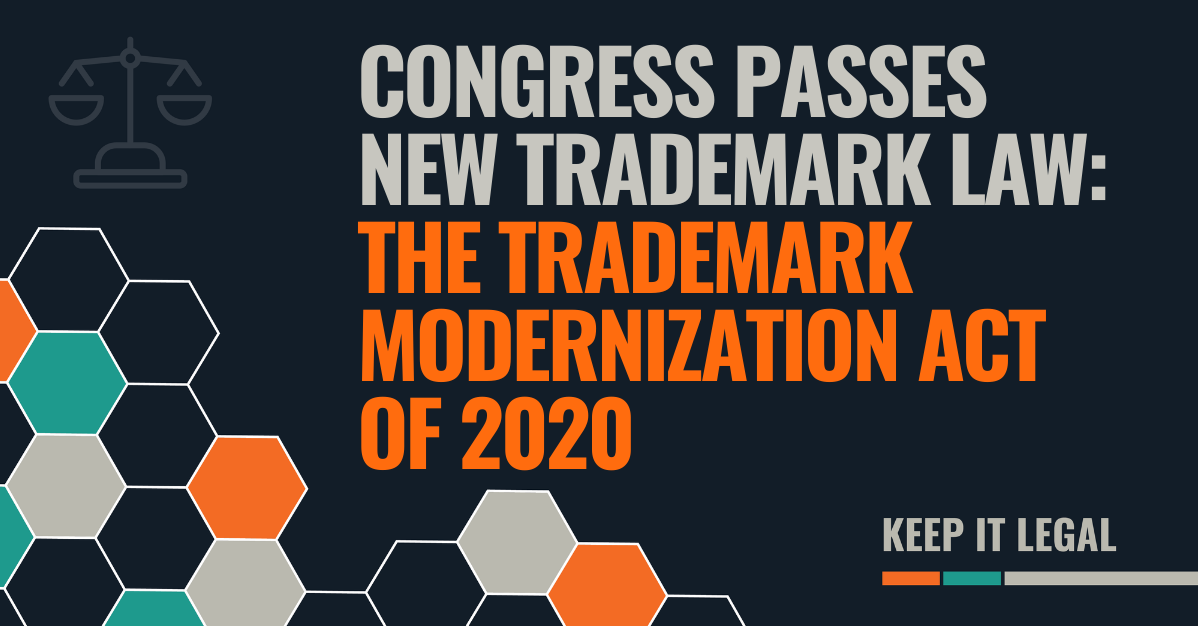The Consolidated Appropriations Act, also known as the coronavirus relief or stimulus, is a massive package of new federal laws that were passed by Congress and signed by the President on December 27, 2020. Included in the Act is a substantial update to U.S. trademark law, the “Trademark Modernization Act of 2020” or the “TM Act of 2020”. It’s a trademark law so nice, they named it twice.
The TM Act of 2020 does a few things. It provides opportunities, short of a costly litigation process, to attack false trademark applications and registrations for marks that are not actually being used in commerce. It also provides additional rights to trademark owners who have successfully asserted their rights in court.
Here’s a summary of what’s new.
The biggest change for most trademark owners is the attempt to address fraudulent applications and registrations. Fraudulent trademark applications are a serious and growing problem. Every trademark attorney in the U.S. has come across trademark applications, often from China, that appear to be obviously fake.
If you’ve come up with a brand name for your product or service, and you go to the United States Patent and Trademark Office (USPTO) to register it as a trademark, you shouldn’t be blocked by a previous filer who used a similar name and submitted a false or doctored Specimen of Use.
If you discover a prior application (which hasn’t yet registered) that looks fake, the Act permits you to file a Letter of Protest to the USPTO asking that the application be denied. This will allow you to submit evidence to support a claim that the mark shouldn’t register. For example, you could show how the specimen attached to the application appears to be fake, or that the goods or services aren’t actually in use.
If the prior mark has already been registered, there are still some options available. Rather than having to go to the Trademark Trial and Appeal Board to have the mark cancelled (which is an expensive and time-consuming litigation process), you will soon be able to submit an ex parte application to have the USPTO reexamine and expunge the registration. All of the details are not yet available, but it seems that this will be a simpler, less costly means of addressing false or out-of-date trademark registrations that are blocking valid new applications from going forward.
Note that the changes identified above don’t go into effect immediately. The USPTO is directed to issue regulations as to the details within one year from the date of the Act. Meaning, more details are forthcoming, stay tuned.
The TM Act of 2020 also helps out trademark owners who have prevailed in court against an infringer. The Act creates a rebuttable presumption of irreparable harm. This means that it’ll be easier for trademark owners to obtain a permanent injunction against an infringer—the court is more likely to order it to cease the infringing actions, on a preliminary or permanent basis.
Finally, the TM Act of 2020 asked for a report to Congress about false and inaccurate trademark applications and registrations. The report will take about a year. This may cause the USPTO to look more closely at applications, registrations, and renewals while the review is being conducted. Hopefully this process will identify new means of combating this ongoing issue.


